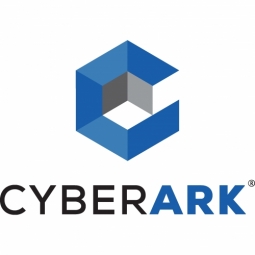Customer Company Size
Large Corporate
Region
- America
Country
- United States
Product
- CyberArk Identity
- Samsung Knox
- Office 365
Tech Stack
- Single Sign-On (SSO)
- Multi-Factor Authentication (MFA)
- Enterprise Mobility Management (EMM)
- Cloud Infrastructure
Implementation Scale
- Enterprise-wide Deployment
Impact Metrics
- Productivity Improvements
- Customer Satisfaction
- Digital Expertise
Technology Category
- Cybersecurity & Privacy - Identity & Authentication Management
- Platform as a Service (PaaS) - Connectivity Platforms
- Functional Applications - Remote Monitoring & Control Systems
Applicable Industries
- Education
- Professional Service
Applicable Functions
- Business Operation
- Facility Management
Use Cases
- Cybersecurity
- Remote Asset Management
- Remote Collaboration
- Remote Control
Services
- Cybersecurity Services
- System Integration
- Cloud Planning, Design & Implementation Services
About The Customer
Early Learning Coalition (ELC) of Palm Beach County Florida strives to ensure that families in the community have access to high quality, affordable early learning programs and services. ELC is a non-profit, funded through state and federal programs and through a partnership with the Children’s Services Council. The organization is dedicated to providing early learning resources and support to families, ensuring that children have the best possible start in life. ELC's mission is to build a strong foundation for children’s success by improving the quality of early learning programs and increasing access to these services for all families in the community. The organization works closely with local partners and stakeholders to create a comprehensive early learning system that meets the diverse needs of families in Palm Beach County. ELC is committed to continuous improvement and innovation in early childhood education, leveraging technology and best practices to enhance the delivery of services and support to families.
The Challenge
Build out a cloud infrastructure to support rapid company growth. Ease the transition to cloud with single sign-on to Office 365 and other apps. Include two-factor authentication for stronger security. Protect and manage company smart phones with EMM. Nearing the end of a contract that outsourced the community services ELC supervised, the company decided to bring the services in house and offer them directly to the public. It was a large undertaking that would require nearly 100 new employees and the opening of new satellite offices. Success would depend on an environment that could support the company’s 300% growth projections. “We didn’t have the infrastructure or services necessary to handle the anticipated increase in employees,” says Luis Mena, Director of IT at Early Learning Coalition. “So we were under a tight deadline to roll out an entirely new infrastructure.” Mena decided to leverage the cloud to the greatest degree possible. “We considered building out our own on-premises infrastructure, but that approach would have required initial hardware costs in the hundreds of thousands of dollars and significantly more time and IT resources than we had available,” he says. “The ease and speed of building out a cloud-based environment made it a better choice. But we needed a strong solution that would help us in the transition.” ELC began looking for a solution that would provide authentication and single sign-on for the cloud services they were evaluating. Security would be a top consideration in any solution, as well as compliance with state and local government regulations similar to HIPAA. Strong, two-factor authentication for remote users would also be required. And if they could locate a complementary solution to securely manage their mobile devices, it would be ideal.
The Solution
ELC evaluated three SSO and EMM providers and selected CyberArk Identity for its more secure technology. “We didn’t like the fact that other solutions cached Active Directory credentials in the cloud,” he says. “With CyberArk Identity, none of our data is replicated, so no credentials could be compromised if there were an intrusion. That was a key differentiator between the services.” Another important component was CyberArk Identity’s Enterprise Mobility Management (EMM) features. “We selected Samsung as our smart phone provider precisely because of the pre-existing integration between Samsung Knox and CyberArk Identity and the capacity to build security policies into our devices,” says Mena. ELC wanted to leverage CyberArk Identity’s ability to provision company-owned mobile devices and to apply corporate policies to enforce device encryption and password guidelines. The company realized they could create a separate set of policies for user-owned devices managed through CyberArk Identity as well. ELC was also looking to further boost security with CyberArk Identity’s multifactor authentication. “Our sites are all trusted sites but when a user is logging in remotely or from home, they can go through the CyberArk Identity authentication window to access any of the services they need.” Due to a lack of internal IT resources and minimal experience in rolling out identity management technologies, ELC used CyberArk Identity’s professional services for the implementation. “CyberArk professional services helped us work through several service provider shortcomings. They were able to integrate Office 365 without any assistance whatsoever from Microsoft,” says Mena. “And they helped us with services like DocuSign, Lynda.com and EasyAppointments as well.”
Operational Impact
Quantitative Benefit

Case Study missing?
Start adding your own!
Register with your work email and create a new case study profile for your business.
Related Case Studies.

Case Study
Revolutionizing Medical Training in India: GSL Smart Lab and the LAP Mentor
The GSL SMART Lab, a collective effort of the GSL College of Medicine and the GSL College of Nursing and Health Science, was facing a challenge in providing superior training to healthcare professionals. As clinical medicine was becoming more focused on patient safety and quality of care, the need for medical simulation to bridge the educational gap between the classroom and the clinical environment was becoming increasingly apparent. Dr. Sandeep Ganni, the director of the GSL SMART Lab, envisioned a world-class surgical and medical training center where physicians and healthcare professionals could learn skills through simulation training. He was looking for different simulators for different specialties to provide both basic and advanced simulation training. For laparoscopic surgery, he was interested in a high fidelity simulator that could provide basic surgical and suturing skills training for international accreditation as well as specific hands-on training in complex laparoscopic procedures for practicing physicians in India.

Case Study
IoT platform Enables Safety Solutions for U.S. School Districts
Designed to alert drivers when schoolchildren are present, especially in low-visibility conditions, school-zone flasher signals are typically updated manually at each school. The switching is based on the school calendar and manually changed when an unexpected early dismissal occurs, as in the case of a weather-event altering the normal schedule. The process to reprogram the flashers requires a significant effort by school district personnel to implement due to the large number of warning flashers installed across an entire school district.

Case Study
Implementing Robotic Surgery Training Simulator for Enhanced Surgical Proficiency
Fundacio Puigvert, a leading European medical center specializing in Urology, Nephrology, and Andrology, faced a significant challenge in training its surgical residents. The institution recognized the need for a more standardized and comprehensive training curriculum, particularly in the area of robotic surgery. The challenge was underscored by two independent studies showing that less than 5% of residents in Italian and German residency programs could perform major or complex procedures by the end of their residency. The institution sought to establish a virtual reality simulation lab that would include endourological, laparoscopic, and robotic platforms. However, they needed a simulator that could replicate both the hardware and software of the robotic Da Vinci console used in the operating room, without being connected to the actual physical console. They also required a system that could provide both basic and advanced simulation training, and a metrics system to assess the proficiency of the trainees before they performed surgical procedures in the operating theater.

Case Study
Edinburgh Napier University streamlines long-distance learning with Cisco WebEX
• Geographically dispersed campus made in-person meetings costly and inconvenient.• Distance-learning programs in Malaysia, India, and China required dependable, user-friendly online tools to maximize interaction in collaborative workspaces.• Virtual learning environment required a separate sign-in process, resulting in a significant administrative burden for IT staff and limited adoption of collaboration technology.

Case Study
8x increased productivity with VKS
Before VKS, a teacher would spend a lot of time showing a group of 22 students how to build a set of stairs within a semester of 120 hours. Along with not leaving the teacher much time to provide one-on-one support for each student to properly learn carpentry, it also left a considerable amount of room for error. Key information would be misinterpreted or lost as the class was taught in the typical show-and-tell way.

Case Study
Scalable IoT Empowering GreenFlex's Sustainable Growth
GreenFlex, a company that supports sustainable development, decarbonization, and energy efficiency, faced several challenges in its quest to expand its business. The company needed to deploy a robust and sustainable IoT technology to support its growth. It was crucial for them to monitor and control devices at customer sites in a safe and reliable manner. They also needed to integrate devices across a range of communication protocols and gather and act on data to meet efficiency targets. GreenFlex had previously built IoT capabilities into its digital platform, GreenFlexIQ, to monitor and manage customer sites remotely. However, they soon realized that they needed a new platform to support their ambitions. They needed a platform that could scale to connect more devices for production management and make it easier for the operations team to manage devices in the field.







